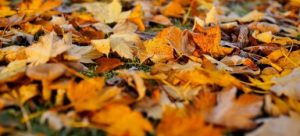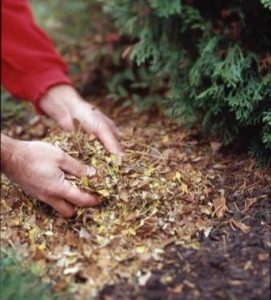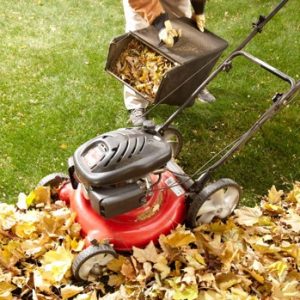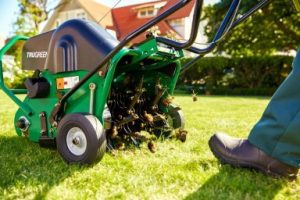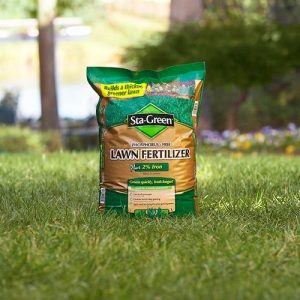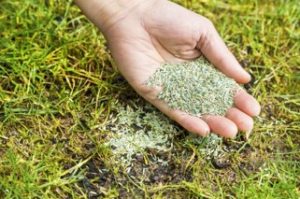Cooler temperatures, colorful leaves, and of course pumpkin spice lattes – fall has officially arrived in Minnesota! It’s the perfect time of year to plant new grass, aerate your soil, pull a few weeds, and take extra steps to ensure your landscape comes back healthy next spring.
Not only are these things good for your lawn, but your local water ways will also thank you! The dead leaves that cover your landscape are full of nutrients like nitrogen and phosphorous that kill fish, feed algae, and contaminate our waters with bacteria and toxins. As a result, it is extremely important to keep leaves and other yard waste away from stormdrains, which will ultimately protect our lakes, rivers, and streams.
The following six steps will help you promote a healthier yard and cleaner waters.
1. Rake Your Leaves
Fallen leaves are pretty to look at, however, they can form a soggy, decaying mat on your lawn that smothers the turf underneath. This exposes your lawn to mold and disease. To keep your landscape happy and healthy, rake the leaves, bag them up, and then remove them in a responsible manner. For example, many cities offer curbside pickup of yard waste, or a yard waste disposal site is always a great option.
Water in Motion Tip: Rake often and early in the season. When leaves are left on your lawn for too long it can cause harm. Not to mention, they’re also harder to mulch, and tend to get into stormdrains. By removing leaves before the first snowfall, you’ll prevent a soggy mess in the spring – and have a healthier lawn!
2. Consider Mulching or Composting
Don’t feel like doing all that raking and bagging? Consider using the dead leaves on your lawn as a natural fertilizer! Leaves have a great deal of nutrients, meaning you can mulch them into smaller bits with your lawnmower and have the same effect as utilizing a store-bought fertilizer. This is a great alternative, as long as it all stays on your lawn. Just remember that when leaves – in any condition – enter into stormdrains, all those nutrients go directly into the nearest waterbody. It would be like dumping fertilizer straight into the river.
Water in Motion Tip: If your landscape is more than 50% covered in leaves, contemplate bagging or composting instead of mulching them. Your lawnmower might have trouble chopping them up enough so they easily fall between the grass blades.
3. Don’t Put Away Your Lawnmower
Just because it’s fall, doesn’t mean the grass stops growing. Don’t be afraid to still take your lawnmower out for a spin if your yard is looking a little shaggy. A good rule of thumb is to set your mower height to three inches – short enough to prevent matting (which can cause snow mold), but long enough to support a healthy root structure. Plus, you’ll mulch up fallen leaves in the process, which acts as fertilizer.
Water in Motion Tip: Think your lawnmower blades are dull? Go to your local hardware store and get them sharpened! If the tips of your grass have a whitish or yellowish color after you mow, your lawn mower blade might be dull. Dull blades can damage the grass and cause the mower to run less efficiently.
4. Time to Aerate
One of the simplest ways to strengthen your turfgrass is by aerating it during the fall season. Aeration is the act of punching tiny holes in your yard to loosen compacted soil, which helps circulate air, water, and nutrients within the soil. Aeration also leads to a healthier landscape because you will use less fertilizer and other harsh chemicals in the long run. Important note: you do not need to aerate every year to get these benefits. Once every couple years will do the trick.
Water in Motion Tip: Not every lawnmower comes with an aeration attachment, so you might need to go to your local hardware store and rent a self-propelled aerator.
5. Fertilize Responsibly
There is no better time to fertilize your lawn than this time of year. Plants are eagerly soaking up and storing any nutrients they can find, and the payoff will come next spring when the grass starts growing again. When you go to the store, make sure you buy zero-phosphorus fertilizers and follow the manufacturer’s instructions carefully. Additionally, sweep up any fertilizer that falls onto hard surfaces so that it doesn’t make its way into stormdrains.
Water in Motion: Go a step further and consider having the University of Minnesota test the soils in your yard! It is inexpensive, plus you will receive helpful information about what kind of fertilizer works best for your landscape.
6. Patch Those Bald Spots
Fall is also the ideal time of year to take care of those pesky bald spots in your yard by planting new grass seed or sod. This will not only make your landscape look better, but growing new grass in bare spots can also help prevent erosion and trap pollutants that would otherwise runoff into the nearest stormdrain. Another tip is to try and plant grass varieties that will grow successfully in your soil and lighting conditions.
Water in Motion Tip: Think your bare spots were caused by winter salt or deicer? Try planting more salt-tolerant grass varieties. Better yet, reduce the amount of salt you use in the winter, since salt and deicer are also big sources of pollution in our waterbodies.


